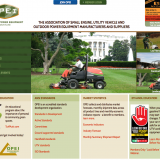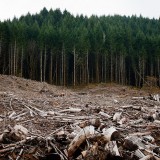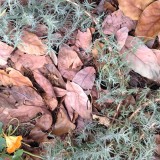
Pomo woman harvesting seeds, 1924, by Edward Curtis
After a break for camping and other things, I’m returning to the series of posts I initiated a couple of weeks ago under the heading, Back to the Garden. While this series is meant to be practical, I have a little more “thoughtstyling” as we say around here before I turn to the hands-on material. Look for new series entries every Thursday.
We are all gardeners. What does this mean? It’s a saying which pops up in all sorts of contexts. Gardening, after all, is a universal metaphor, so the idea that “we are all gardeners” appears with equal validly in conversations about spiritual matters as it does in those about child development. The phrase is also often used in permacultural circles, where — by oral tradition, at least — it is attributed to Bill Mollison, though after a solid half hour of searching I haven’t been able to find a citation of him saying this in print.
In permacultural terms, to say we are all gardeners means simply that everything we do influences our environment. Whether we will it or not, our daily decisions shape the natural world around us, as surely as a gardener shapes her plot.
Every time we shop for food, every time we drive our cars or mow our lawns or choose where we’re going to live or just when settle down on the couch with our laptops, we are deciding what the world looks like. We choose to extract certain things from the natural world, and we choose to…er… supplement…our soil and our water with various substances. We choose what may and may not grow, when and where. We decide what may and may not crawl, creep or fly in our lands. We’ve already chosen to develop most of our land for human use. Consciously or unconsciously, we dominate the land.
Our influence is permanent, and huge. (Have you heard about the anthropocene epoch?) Somewhere in our group subconscious we like to believe there is always more wilderness, more chances, somewhere for the wild to be. But there simply isn’t. For example, check out this light pollution map of the U.S. How much undeveloped land is left to beast and bird and tree? Or, to put it another way, what isn’t a parking lot these days?
But this isn’t just about the abstract protection of species of fish, bird and insects we’ve never even seen. It’s about us, and the quality of our future as well. One of our best hopes for softening the effects of climate change is to work with nature as our ally. If we bring nature back into our cities and suburbs, if we build soil and plant trees and encourage biodiversity, we can do amazing things, like sequester carbon and regulate temperature and protect our lands from flooding. We can do all these things and support other species at the same time.
And on another level, we need nature to remain healthy and sane. It’s not just about food or water or air quality, it’s about spirit. We are programed to be in relationship with the natural world. This is the subject of a whole different essay, but if you need convincing, check out books like Last Child in the Woods and Your Brain on Nature, or more immediately, articles on “nature prescriptions” like this one in Slate.
Embracing our role as gardeners and stewards of creation is a thread of hope in an otherwise grim time. It’s a way of telling a story which counters our prevailing narratives of hopelessness and destruction. It’s also something we can do on our own. Every bit helps, so you don’t have to wait for the government to clue in, or for your neighbors to agree.
We’re already gardening, as I’ve said. It’s not that hard to simply choose to be better gardeners. It starts with acknowledging our deep reciprocal relationship with the natural world. After all, if we’re looking for atonement with the natural world, it is well to remember that atonement literally means “setting as one” — at-one-ment. To heal the natural world we have to admit we are part of it, that we need it, and it needs us.
If we could restore this relationship, we’d be a long way toward returning to Eden.
In this I’m greatly influenced by M. Kat Anderson. (See my review of her book, Tending the Wild.), Tending the Wild is about Native American management of the the California landscape, an active management which was subtle enough to be invisible to European colonists, but so successful that it created a literal paradise on earth, a landscape rich with fish and game and meadows of tall grass and riotous wildflowers, shaded gently by spreading oaks.
None of this was accidental, or Providential, as the colonists believed. The land was rich because the land was loved and actively managed by the tribes to ensure that they had the food and materials they needed, while supporting the rest of creation to the mutual benefit of all. They were practicing a form of permaculture so advanced that we can only hope to emulate it one day.
This was not a California-specific phenomenon. People who we call “hunter-gatherers” shape and have shaped the land all over the world, even to this day–though the knowledge is dying, almost lost. This, for instance, is a nice short essay by Bill Gammage about the gardening practice of Indigenous Australians, which sounds very much what Anderson describes in Tending the Wild.
I’m not saying Native practice was perfect all over the world for all time, that they never made mistakes or got greedy, but I will hold on to a vision of humankind returning to a respectful, reciprocal relationship with the rest of life after a long, destructive period of exile. We can do this by becoming conscious gardeners, Edenic gardners.
I know we can do it because evidence says we’ve done it before. And I know we have to do it, if we want to craft a decent future for our children.
We have to do this if we want to ameliorate the effects of climate change, to cool our burning cities, to help the soil absorb the floodwaters.
And we will do this because we love the sound of the birds in the trees and bees in the flowers.
We will do it so children born today will experience the vibrant natural world as something more than a bedtime story.
We will do this because it is the right thing to do.
From here on I’m going to focus on gardening as actual landscape management, as opposed to our consumer choices and civic activities, though those are very important as well. People who own or manage land bear particular responsibility of caring for the land in return for their privilege.
But those who don’t own land are not powerless. First, they should remember that they can work with conservation groups to restore and maintain ecosystems as well as launch guerrilla and otherwise informal initiatives to heal the land around them. Second, remember that we are all influencers. As I said above, every time we vote, every time we buy something, each time we take a trip or choose a place to live, we are influencing the landscape and we are influencing people who have more power over the land than we do.
(An aside: At this point I suspect permaculture folks are going to say what I’m talking about when I say gardening is permaculture, and I won’t disagree. But I’ll also say that permaculture as a discipline can be intimidating from the outside and the cost of training prohibitive. In this series I’m going to be suggesting practices which align with permacultural ideas, but which are perhaps more immediately accessible to the general reader. I do believe people with permaculture training will be in demand and of much use in the coming years. )
The Loving Landscape
I propose a universal rethinking about how we tend our yards and public spaces.
The Old Way:
Lawn-based. Status seeking. Conformist. For show, not use. Value of landscape based abstractly on the value of the property. The yard chores are outsourced. Few species of plants are used (e.g. a front yard may host a total of 3 species: turf, a specimen trees, a hedge). The species chosen are likely not local species, but exotics, so do not express any particular sense of place, other than a generalized sense of suburbia. The outdoors is kept as tidy as indoors: the grass is raked, the leaves and cuttings are thrown away, everything is rigorously pruned. Wildlife is not welcome.
This landscape is extractive by nature, meaning it is not self-sustaining, but reliant on biological and chemical inputs stolen from other locations, from fertilizer to weed killer to the gasoline and electricity needed to run the tools necessary to to keep the landscape trim, and in some climates, the water needed to keep the grass green.
It is expensive.
It is life-denying.
The New Way: The Loving Landscape
The Loving Landscape invites and encourages life at many levels. Its value is founded on its ability to sustain life in as many forms as possible, from microbes to humans. The focus is not on surface glamor, but on the invisible, but critical aspects of the landscape: the life of the soil and the path of the water. The active soil ecology supports the surface plants without need for store-bought inputs. Rain water is captured and channeled through a variety of means to both irrigate the garden and charge the groundwater.
The plants in the loving landscape promote biodiversity and the local ecology. They are largely native, but not dogmatically so. The landscape represents the unique spirit and history of the region. The plants serve the larger ecology, feeding insects and birds and providing habitat for small animals, birds and reptiles. Loving landscapes join together from house to house to form corridors and refuges for wildlife. There is room for human food crops as well, because abundance is a key virtue in the loving landscape.
The garden is a space of reflection and reconnection for the gardener and their family and community. The land is not always tidy, but it is always vital.
Next week we’ll start talking about how to craft this kind of environment.






In his book The Once and Future World, J.B. MacKinnon says North America is the most human-altered—gardened, you might say—landscape on the planet, for, as the glaciers receded, humans immediately followed.
That is an excellent book–you recommended it to me, didn’t you? I haven’t reviewed it yet because it leaves me somewhat speechless. But wow, yes.
Love this post! I have a big garden in a part of the country that values neat, neat, neat – the straighter the row, the better. This is my first year of no-till and your post will help me embrace the shagginess.
great post.
looking forward to the series
Fundamentally we can do pretty much anything to the land and it will recover, as long as the area affected isn’t too large. The area we use is directly related to the human population.
Old ways worked in part because there were so few humans.
I’m interesting in seeing how you propose we create a loved landscape that support current rising population.
(Lest I sound too negative, I would love to believe it’s possible for all of us love the places we live, supoort and be supported by local landscapes)
Love the idea of bringing stewardship back to being a homeowner. Ask not what your land can do for you but what you can do for your land…
Your mention of light pollution leads me to recommend Barbara Brown Taylor’s most recent book, “Learning to Walk in the Dark”. The whole book is a look at what she calls “lunar spirituality”, and includes an exploration of different kinds of darkness and light. I love her writing–this is the third of her books that I have read–and I get the feeling that you might enjoy it as well, Kelly.
yes, yes, and yes!
Kelly, I love it when you get like this!
Pingback: Transition Towns Maroondah Inc » This is for everyone…
thank you so much for your post. It reminds me of an article I read about the importance of wildlife corridors:
http://www.mnn.com/leaderboard/blogs/why-wild-animals-need-wildlife-corridors
I live in an area of East Portland that has very few paved roads (known as the ”hillbilly” part of town, ha ha) and wonder how hard it would be for the neighbors to convince the city to plant native gardens in them. Paved roads are so expensive and the city barely has enough money to keep up the existing roads. This neighborhood has very large lots and I’ve been seeing backyard habitat certification signs popping up here and there. It’s very promising and there are so many possibilities! I am holding out hope that we can figure out how to live in a more ”reciprocal” way with nature, as you put it….if for no other reason than that it’s cheaper than keeping up infrastructure!
Love this. Gardening and growth are my main poetic metaphors always.
Great post, Mrs. Homegrown! Lawns reminds me of the Scott’s Fertilizer commercials. I cringe every time I see it. What a waste!
Thank you Mrs. Homegrown for this great post. We need to create and spread a shared positive vision of what the future might be!
It resonates so well with me and my efforts in my town where I am working to bring forward a food forest project trying to address many of the points you rise in your post:
http://www.fruttortiparma.it/biodiversita_en.html